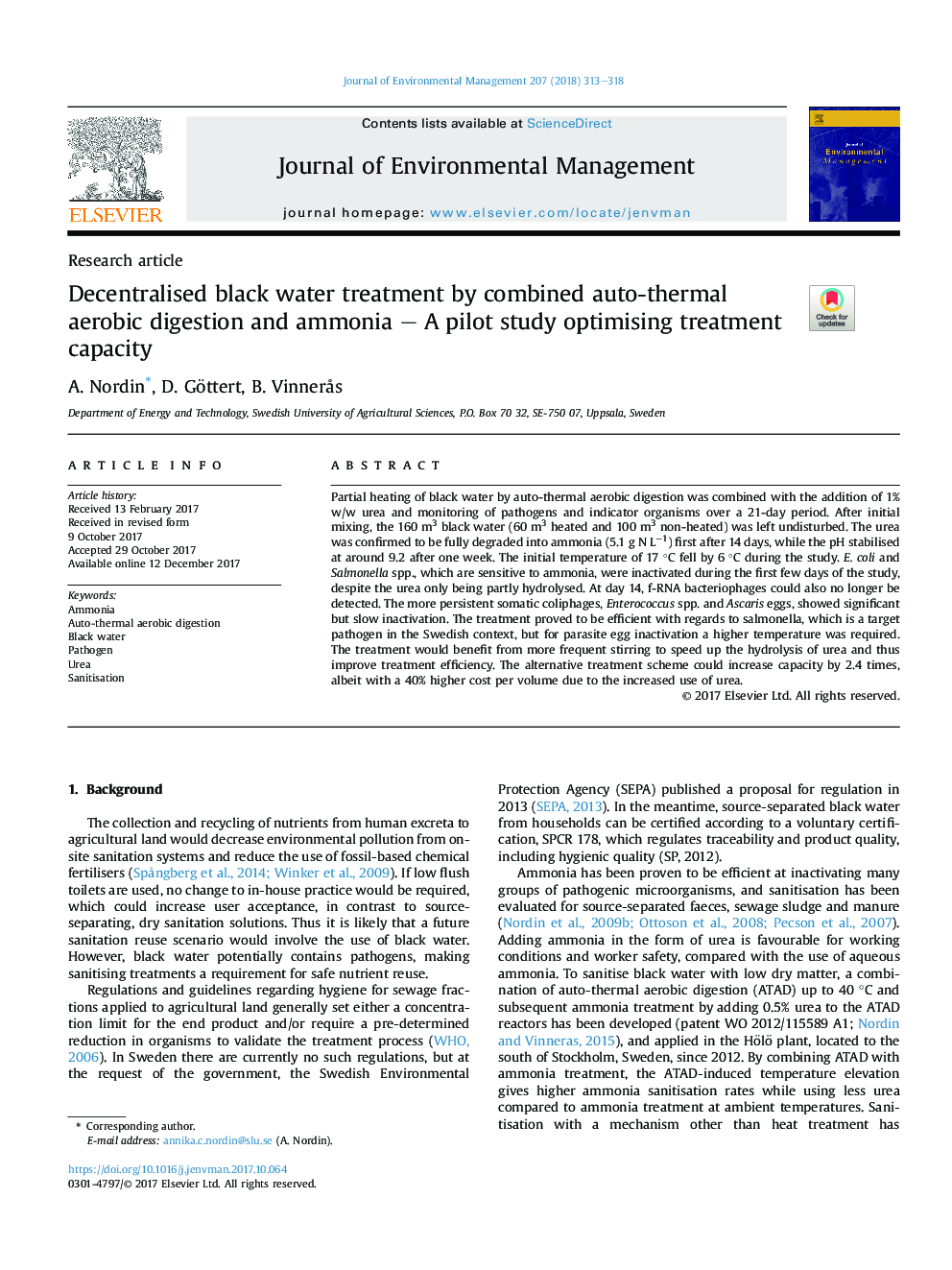| Article ID | Journal | Published Year | Pages | File Type |
|---|---|---|---|---|
| 7478578 | Journal of Environmental Management | 2018 | 6 Pages |
Abstract
Partial heating of black water by auto-thermal aerobic digestion was combined with the addition of 1% w/w urea and monitoring of pathogens and indicator organisms over a 21-day period. After initial mixing, the 160 m3 black water (60 m3 heated and 100 m3 non-heated) was left undisturbed. The urea was confirmed to be fully degraded into ammonia (5.1 g N Lâ1) first after 14 days, while the pH stabilised at around 9.2 after one week. The initial temperature of 17 °C fell by 6 °C during the study. E. coli and Salmonella spp., which are sensitive to ammonia, were inactivated during the first few days of the study, despite the urea only being partly hydrolysed. At day 14, f-RNA bacteriophages could also no longer be detected. The more persistent somatic coliphages, Enterococcus spp. and Ascaris eggs, showed significant but slow inactivation. The treatment proved to be efficient with regards to salmonella, which is a target pathogen in the Swedish context, but for parasite egg inactivation a higher temperature was required. The treatment would benefit from more frequent stirring to speed up the hydrolysis of urea and thus improve treatment efficiency. The alternative treatment scheme could increase capacity by 2.4 times, albeit with a 40% higher cost per volume due to the increased use of urea.
Related Topics
Physical Sciences and Engineering
Energy
Renewable Energy, Sustainability and the Environment
Authors
A. Nordin, D. Göttert, B. VinnerÃ¥s,
